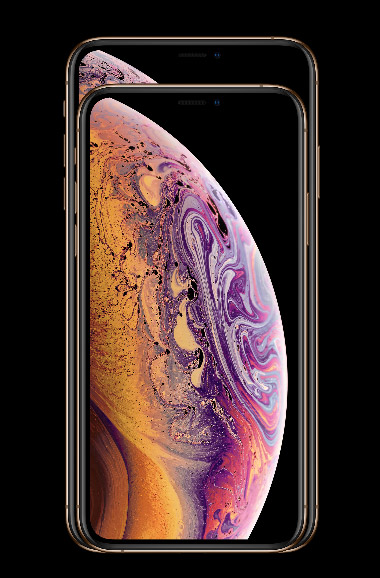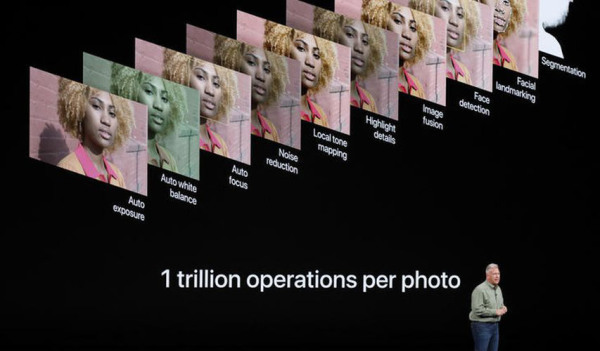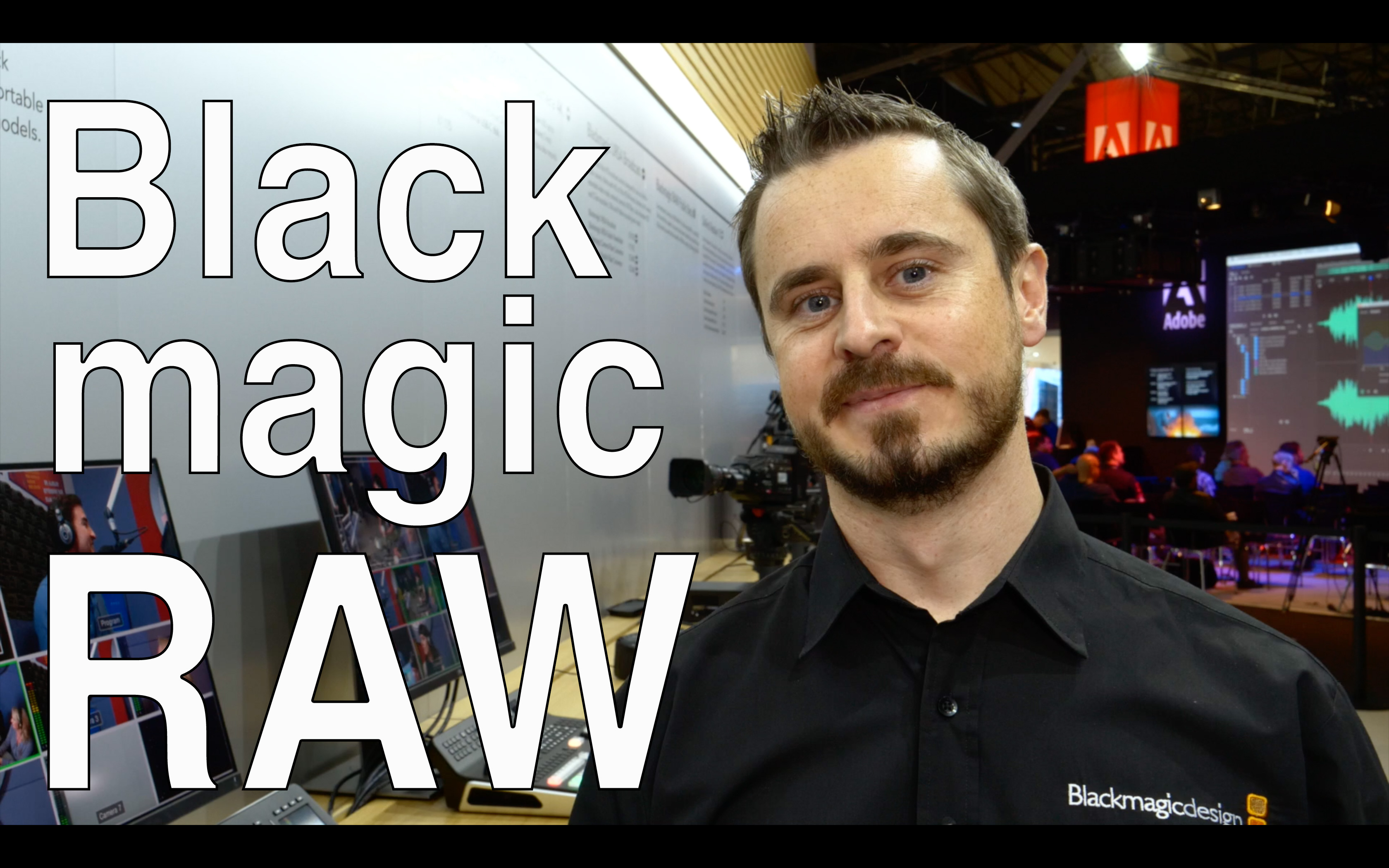[12:29 Thu,13.September 2018 by Thomas Richter] |
Yesterday it was time for new iPhones again: Apple follows the general trend towards larger smartphones with bigger and bigger displays, which Apple initially resisted under Steven Jobs: the new iPhone XS has a 5.8" (2,436 x 1,125 pixels) OLED Super Retina display with 2,688 x 1,242 pixels, the iPhone XS Max even a 6.5" OLED Super Retina display with 2,688 x 1,242 pixels - at 458 ppi.  SmartHDR So the new SmartHDR mode (which works similar to the Google Pixel mode) - which is supposed to be much better than the HDR mode of the iPhone now replaced iPhone X - constantly takes pictures as soon as the Phot app is opened. There are always the last 4 pictures and additional secondary interframes with different exposures as well as a long exposure for shadow details in the memory. This does not only mean that there is no delay (lag) during the recording, but it also makes it possible to combine an optimal photo from different image areas of the differently exposed images via Neural Engine. New is also the possibility to adjust a simulated aperture step (f1.4 to f16) afterwards with the help of a Bokeh-Sliders and thus change the depth of field. Camera The two iPhones use new sensors that have a resolution of 12 megapixels like the previous model, but are larger and therefore more light-sensitive. The wide-angle main camera has an optical image stabilisation (OIS) and a 6-element lens with f/1.8, the adjacent telecamera with also 12MP and OIS has a 2x optical zoom with f/2.4 lens. Especially interesting for filmmakers: both cameras can record 4K video with up to 60fps, HDR video with extended dynamic range with up to 30 fps and slow motion video in 1080p with 120 fps or 240 fps. Video can be recorded in HEVC and H.264 formats - the sound is now recorded in stereo for the first time.  SmartHDR In addition, the video is also optically stabilized and has a so-called cinematic video stabilization (1080p and 720p) - but this already exists since the iPhone 6S. Time-lapse videos are also stabilized, which probably means the usual subsequent image stabilization during hyperlapse camera driving. Further features of the camera: a continuous autofocus, geotagging now also of videos, the recording of 4K video photos with 8 megapixels during video recording and zooming during playback. Display The new OLED Super Retina Display has a 60% greater dynamic range than the iPhone X, supports HDR and automatically adjusts to the ambient light in brightness and color temperature using True Tone technology. Also new is the protection against (salt) water and dust according to the IP68 standard, i.e. the new iPhones have a water resistance up to 30 minutes and at a depth of up to 2 meters. The battery performance has been increased in both models, so the iPhone XS lasts 30 minutes longer, the XS Max even 90 minutes. The new A12 Bionic processor is said to be 15% faster than its predecessor. For the first time two SIMs are supported - but one of them only via integrated eSIM, the new standard for virtual SIMs. But the size of the new iPhones has its price: the new models outperform the iPhone X introduced about a year ago and already discontinued: the iPhone XS with 64 GB costs about 1,150 Euro, the iPhone XS Max with 64 GB 1,250 Euro - as always Apple can pay for additional storage space: the 256 GB iPhone XS costs 1320 Euro, the 512 GB version 1550 Euro. Similar to the iPhone XS Max: the 256 GB model costs 1420 Euro and the maximum equipment with 512 GB memory even 1,650 Euro. The also new model XR is a bit slimmed down and - unlike the top models - is aimed at a price-conscious audience with only one back camera and an LCD instead of OLED display, it costs from 850 dollars (64 GB). All models can be pre-ordered from September 14th, and will be delivered from the 18th. Bild zur Newsmeldung:
deutsche Version dieser Seite: Apple iPhone XS und XS Max: riesiges 6.5 Zoll Display, virtueller Bokeh und bis zu 1.650 Euro teuer |






